This article is for: startup founders who are developing software products or minimum viable products and need to understand commonly used software architecture and design patterns. Also useful for developers who want to familiarize themselves with commonly used software design patterns.
<– Back to: “How to Create Software: Development Techniques to Learn”
Now that your startup has a software product idea and have hired either an in-house development team or outsourced the work you need to start thinking about the structure of the proposed software. What is the general functionality and how will all the components work together? Thankfully, there are software architecture patterns available that do all this work for you. These architecture patterns are basically a structural organization scheme to solve common problems that can be used by startups so they are not re-inventing the wheel. These patterns are also referred to as software design patterns.
In this article, we will outline what architecture patterns are, as well as some of the top patterns available to startups. Additionally, we will explain the criteria entrepreneurs should focus on when selecting an architecture pattern for their software product.
This article is for startup founders who plan on developing a software product. This article will help founders learn the usefulness of architecture patterns, as well as how to identify the correct pattern for the proposed software.
Once your startup has a software product idea and development team, you need to begin to think about the structure of how the product will function. Use this resource to learn about the different architecture patterns available, as well as the evaluation criteria that should be examined during the selection process. Ultimately, the goal is that through learning about software architecture patterns early startups will be able to utilize them correctly during development.
Topics to be covered:
Key Takeaway: Software architecture patterns are structural layouts that are used to solve commonly faced design problems within the software development industry. These patterns are used to prevent startups from having to reinvent the wheel every time they start a new project. These patterns should not be used to design the entire project, but rather different patterns should be used to create individual components of the overall design.
Due to the rising complexity of today’s current software the associated development, maintenance, and enhancement tasks have become increasingly tedious and time-consuming. As a result software architecture patterns have been created to ease the workload for software architects, developers, and operators.
These architecture patterns are a reusable solution to a commonly occurring problem within the field of software design. Software architecture patterns are a description or template for the structural organization or scheme for how to solve a problem that can be used in many different situations. You can think of them as formalized best practices that your startup can use to solve common problems when you are designing your software product.
The focus of this article is on how reoccurring software architecture problems within different domains have resulted in the creation of common architecture patterns. This is because these patterns can be reused to solve similar future problems within different domains. Some examples of how software architecture patterns have been used to solve common problems include:
Overall, architecture patterns provide the knowledge and a set of strategies for creating your software product based upon a previously solved similar problem. The main challenge, however, is finding a way to make an architecture pattern fit your startup’s particular software system.
Key Takeaway: Architecture patterns provide a proven reusable solution for commonly encountered structural design problems, such as layouts and how different layers should interact with each other, within the software development industry. They, however, overly complicate the software development process if an inappropriate pattern is selected.
There are a number of advantages and disadvantages to using software architecture patterns during the course of development. Startups use architecture patterns for different reasons. Some of the advantages of using an architecture pattern are the following:
Though the use of architecture patterns during software development is beneficial there are some drawbacks. Some of the disadvantages of using an architecture pattern include:
Overall, startups should review all the advantages and disadvantages or using a software architecture pattern prior to committing to one.
Key Takeaway: Selecting an architecture pattern is an important task during the development process. Startups need to ensure they select an appropriate one as changing the pattern part way through is a difficult and costly challenge.
Once a development team and software development methodology has been chosen, your startup can begin to think about the architecture that will be used during product development. The act of choosing a software architecture will be the first hurdle that your startup overcomes during the development process.
If a startup selects an architecture that makes the design too strict and rigid, it will conflict with agile development methodologies and require too much big design up front. Alternatively, if the architecture is too loose or not fully implemented, the open boundaries of the design will leave the developers confused.
Picking the right software architecture is crucial for the success of the developers. Software design patters are the basis for communication, the plan of the entire software product, and is critical for stakeholder understanding.
There is no single software architecture that can be considered efficient for all software development scenarios. A startup needs to choose an appropriate architecture pattern based upon the given circumstance.
Key Takeaway: Startups need to review their company’s business needs, development team capabilities, as well as the required functionality of the proposed software product. All of these components need to be examined to ensure the correct architecture pattern is selected.
Commonly, the selection criterion for choosing an architecture pattern is based on the company’s or development team’s experience and research. Once a startup knows some of the features and workflows that they will be creating during development, they can begin to think about different architecture patterns.
These patterns will address issues such as minimizing the business risk, mainlining high availability, and more. As a result, it is important to select the correct one for a given situation. Below details the selection criteria that should be considered when trying to select an appropriate architecture pattern for the proposed software product.
Key Takeaway: Each architecture pattern consists of a basic structure that is used to complete a common software task. Startups need to ensure they select a pattern that will solve their required problem, not just one that might be the easiest to work with.
Reviewing the required product features is the most important aspect of architecture pattern selection. Startups need to ensure that the selected architecture pattern is appropriate for the intended purpose and function of the software product.
Each software architecture pattern has a list of commonly produced applications based on their structure. Startups should review and see which patterns are best suited for their product’s features to ensure a suitable architecture pattern is selected.
Key Takeaway: Startups should review their organization when beginning to evaluate different software design patterns. A review of the development team’s experience, as well as the overall business needs need to be consulted before selecting a pattern.
Prior to selecting an architecture pattern, your startup needs to ensure it is a perfect fit for your organization. Does the proposed pattern fit within the business needs of the startup? Does you selected development team have the expertise required to deliver and maintain the architecture pattern?
A development team that consists of novice developers should stick to more tried and true architecture patterns. This is because there is a rich community that can provide assistance during the creation of the product, as well as multiple historic examples of products created with the pattern that can be referenced. Startups should focus on the layered or client-server architecture patterns as they are the more simple products to create.
Overall, entrepreneurs need to be able to evaluate their startup’s business as well as the people during the selection process. This ensures that the selected architecture is appropriate for both the startup as well as the team conducting the work.
Startups should additionally review the project’s budget and anticipated deadlines to ensure that the proposed architecture pattern does not unnecessarily complicate the software product. Startups should choose the simplest appropriate architecture pattern to ensure that the project is completed on time.
Overall, most software architecture problems trying to be solved are variations of previously solved ones. Startups can often find similar architecture patterns, or at least architectural components that can be used to create an overall architecture pattern. Startups should look at past examples for inspiration and a method to do the work.
In conclusion, the selection of an appropriate software architecture pattern is important. This is because the selection must allow your startup to be able to satisfy the business requirements in order to succeed. Commonly, in order for an architecture pattern to success it must have a low fault tolerance, be scalable, as well as being reliable to produce the necessary performance.
Key Takeaway: Selecting an architecture pattern may complicate the software development project. This is because a pattern can increase the amount of work required to create a product. This is especially harmful what a startup could have used an easier solution with less code.
Choosing an architecture pattern will help ease some of the challenges found during software development. Selecting an architecture pattern at the start of the development process, however, may not be the right choice for all startups.
Architecture patterns are a great tool when it comes to structural component design. Using them as a starting point, however, often leads to over-engineered systems of hype-driven-development. Where startups base their decision based on what is most popular within the development community at that time.
Before your startup selects an architecture pattern ensure you think about the overall view of the top level components of your software product. This step is important because architecture patterns should not be considered in being a top level approach as they are primarily valuable when creating the design of one particular component.
Overall, startups should thoroughly review all possible software design patterns and their proposed software product before committing to a pattern. This is because selecting an architecture pattern can complicate the development process at times due to the introduced structure.
Key Takeaway: There are a variety of architecture patterns available to use during software development. Each consists of a set of rules, constraints, and characteristics that are unique to the specific problem that they are trying to solve.
Now that your startup knows how to select a software architecture pattern, it is time to learn about the different options available. Every approach comes with its down advantages and disadvantages. The challenge with selecting an architecture pattern is that one single design approach will not fit every part of your software system. Below are some common patterns, with advantages and disadvantages summarized. You can explore a wide range of other software design patterns here.
Each architecture pattern contains a set of rules, constraints and patterns of how to structure a system into a set of elements and connectors. These patterns involve a series of decisions based on a variety of aspects within software development, and each decision can have a significant impact on the overall success of the software.
An architecture or design pattern is therefore tailored to fit a specific structure so that the fundamental idea is reached to solve the common known software architecture problem. The following sections of this article detail the top software architecture patterns available.
Key Takeaway: The layered software architecture pattern is one of the most widely known patterns. It uses layers to separate the code and create a unidirectional relationship between them. This pattern is best suited for general desktop applications, and e-commerce web applications.
One of the most well-known software architecture patterns is the layered pattern. This is because this architecture pattern is usually built around a database, and many applications in business naturally lend themselves to storing information within tables. Many developers use this pattern without really knowing it by name.
The core concept of this architecture pattern is splitting the code into different layers. Each layer then has a certain responsibility and provides service to a higher layer. There is no predefined number of layers, but the following are ones that developers see the most often:
The layers have a unidirectional allowed-to-use relationship, where layers can only interact with each other in one direction (Figure 1). Unidirectional relationships plus the creation of isolated layers ensures that refactoring (restructuring existing code) is easy since any change made within one layer does not affect another.
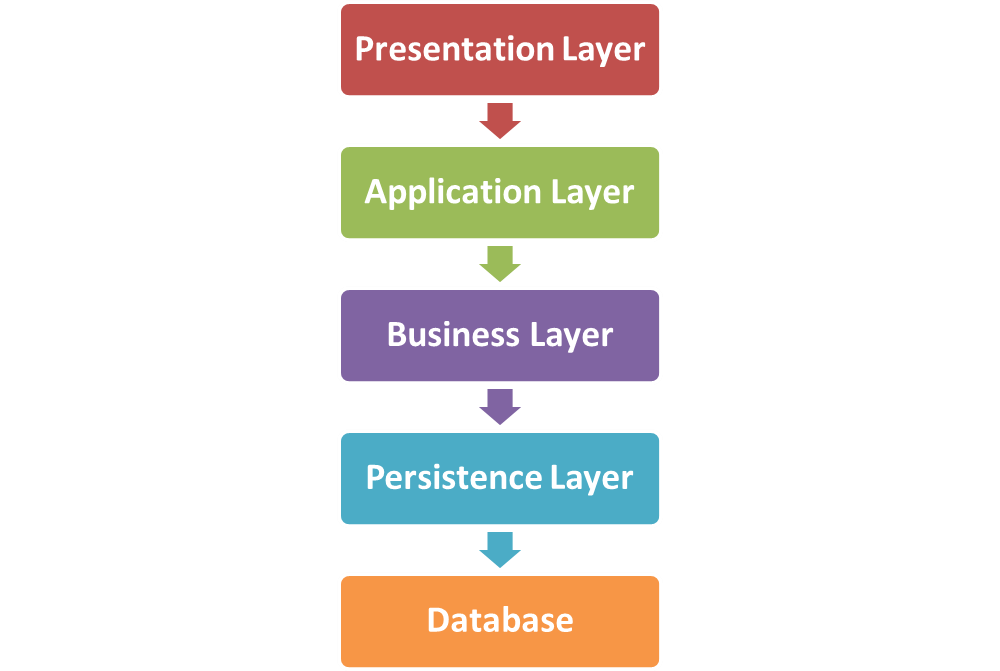
Variations of this architecture pattern are found depending on the complexity of the developed application. Some project might omit the application layer, while others might add a caching layer. It is also even possible to merge two layers into one. An example of which is a company named ActiveRecord whose architecture pattern combines the business and persistence layers.
Based on the above advantages and disadvantages there are particular situations where using a layered architecture pattern allows your startup to develop software faster, cheaper and with fewer major bugs and issues that need to be solved. Some examples of suitable situations of when a layered pattern should be used include:
Many of the biggest software frameworks (like Java EE, Drupal, and Express) were built with this structure in mind so many of the application built with them naturally come out in a layered architecture. This architecture pattern is commonly used to create a number of different software products, including:
In conclusion, the layered software design pattern allows startups to logically separate the source code into individual layers. Since this pattern is commonly used, startups will be able to find examples of it in action within their research easily.
Key Takeaway: The blackboard pattern is commonly used when creating innovate software products as none of the other architecture patterns are suitable. This pattern allows for startups to easily reuse algorithms present on the blackboard, however, communication within the system can be difficult as the application created cannot handle parallel processing.
The blackboard architecture pattern has emerged as a result of the increased prevalence of Artificial Intelligence (AI). This is because this pattern works best for problems that currently has no deterministic solution known. As the field of choice expands and matures, a different architecture pattern can be selected later.
The blackboard architecture pattern consists of three main components that work together to form the pattern (Figure 2). The components of the architecture are:
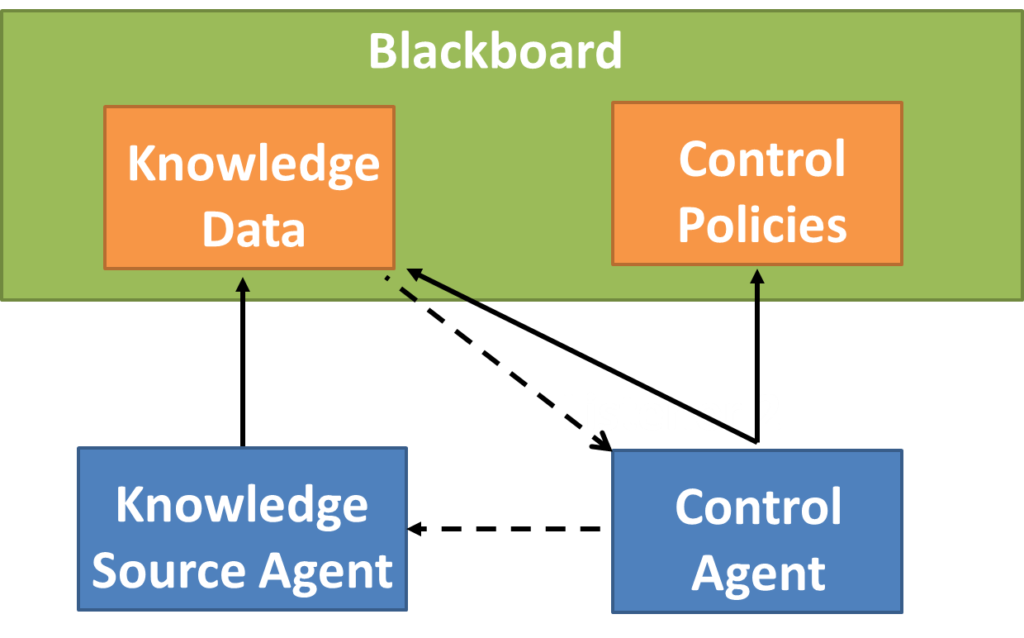
Components all have access to the blackboard. Individual components may produce new data objects that are added to the blackboard. Likewise, components can look for particular kinds of data on the blackboard and can find these by pattern matching with the existing knowledge source.
The blackboard architecture pattern is best suited for software products that do not have known historical strategies because the field is so new. These usages include:
In conclusion, the blackboard architecture pattern is best suited for startups who are working with cutting edge technology where no other architecture pattern is deemed suitable for. Once the field matures, startups need to be aware that they may need to change the architecture pattern which could be a costly endeavor.
Key Takeaway: The client-server pattern is for software products that involve multiple users connecting to a single or multiple servers in a distributed system. This pattern is best suited for file-sharing products and online gaming platforms.
This architecture pattern segregates the system into two main applications, the server and the clients (Figure 3). The server component provides services to multiple client components following a client request, while listening for additional client requests. In many cases, the server is a database with application logic represented as stored procedures.
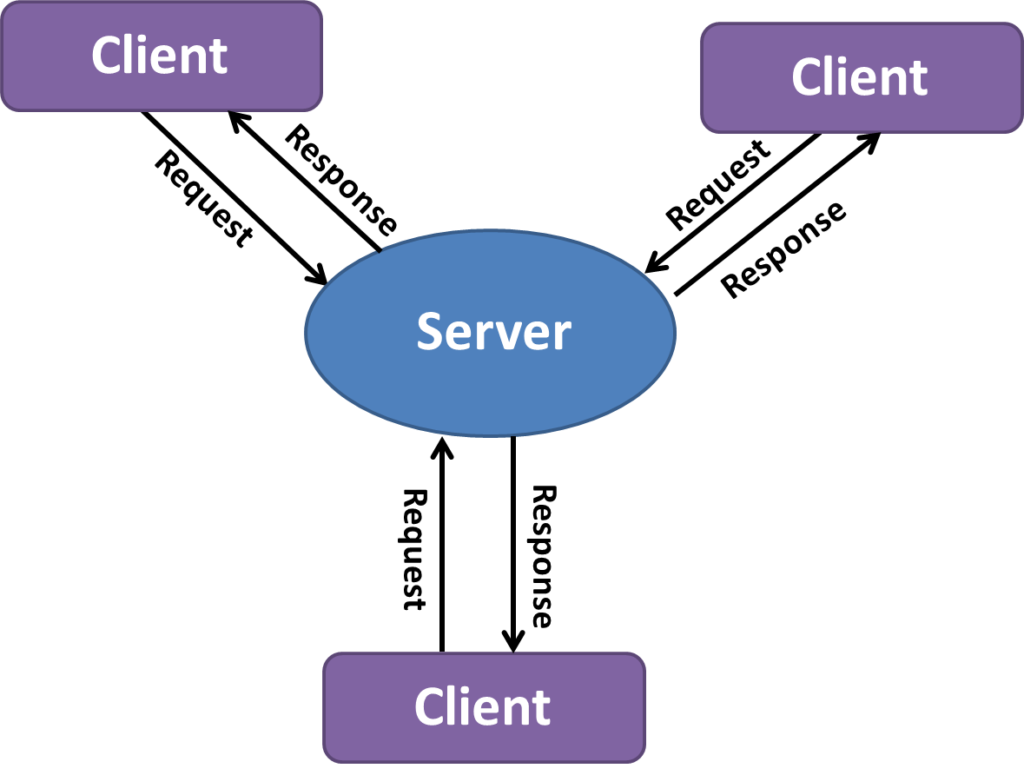
This architecture pattern helps to design distributed systems that involve a client system, a server system, and a connecting network. It is also an appropriate architecture pattern in a situation where there are several distributed clients that wish to access the same set of resources and services. Instead of having each client implementing the same logic repeatedly, clients interact by sending requests for common services to one central server or multiple distributed servers.
This architecture pattern is commonly used to create a number of different types of software products. One example of a company that uses this pattern is Blizzard’s Battle.net service which hosts online games for World of Warcraft, Overwatch, and more. Some examples of software products that are commonly made by the client-server architecture pattern include:
In conclusion, a client-server software design pattern allows developers create a software product centered on a single server providing the same resource to multiple users at the same time. This is beneficial is as the shared resources make it easier to manage and modify if required later on.
Key Takeaways: The master-slave pattern involves a master component distributing all the required work among individual slave components before compiling the results. This architecture pattern is best suited for multi-task applications and the creation of databases.
The master-slave architecture pattern is best suited for situations where the software product will be executing tasks that can be easily divided up. This pattern consists of two parties, the master and the slaves (Figure 4). Some programming languages and development tools refer to this pattern alternatively as the primary-replica (or secondary) pattern, or the controller-worker pattern.
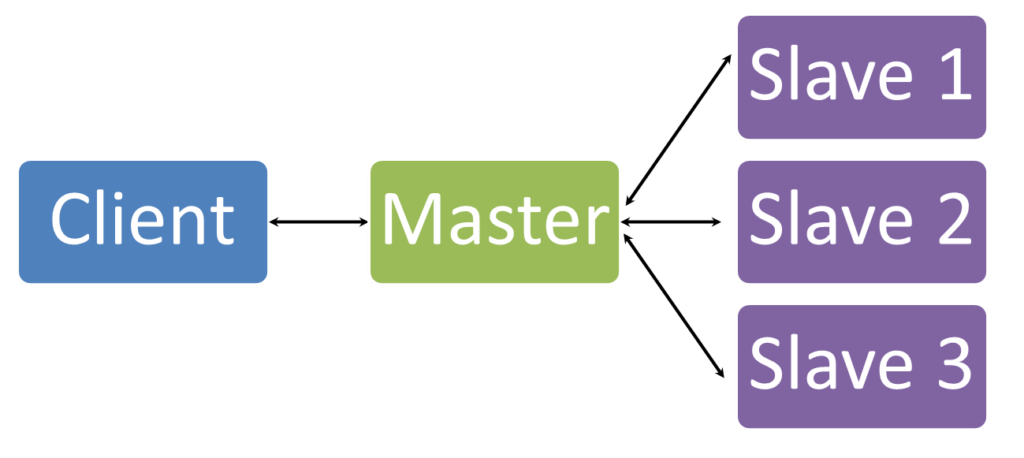
The master component distributes the required work among individual slave components in a divide-and-conquer approach. After the work has been completed the salves, the master compiles the results together and presents it to the user. The master-slave architecture pattern saves time since many slaves are used to compute in parallel. This architecture pattern is commonly used in database replication and connecting peripherals to a bus.
The slaves that are conducting the work should not have any dependencies that impact how the Master divides up the work. Any dependencies within the system make the solution inflexible and make it harder to have clear separation between the master and the slaves.
The master-slave architecture pattern is commonly used when a software product has been created to execute a number of separate jobs at once, or when a computationally expensive problem needs to be solved and can be decomposed into smaller components. One example of a situation that would require the master-slave architecture pattern are when the user wants to collect multiple pieces of data from a database where the master would assign each slave a specific location to review for the required information. Another example is the SETI Institute that created the largest distributed computer system to process raw data to be provided back to the master server that integrated all the processed data into a single database. This architecture pattern is commonly used to create the following software products:
In conclusion, the master-slave software architecture pattern is useful when the proposed software product will be executing tasks that can be easily divided up. This pattern is primarily used in the creation of databases, and multi-task software applications.
Key Takeaway: The pipe-filter pattern uses filters that transform provided data before passing it onto other components using pipes, a pathway to pass data from one location to another. This pattern is best used when structure systems that have a product and process a stream of data.
The pipe-filter architecture pattern is a simple, yet powerful, architecture. It consists of any number of components (filters) that transform or filter the provided data, before passing it on using connections (pipes) to other components (Figure 5). All of the filters work at the same time to process data.

This architecture pattern consists of four main components that work together to process the data. Each component has its own purpose and they are as follows:
The pipe-filter pattern can be used to create a simple sequence, all the way up to very complex structures. As a result, this architecture pattern is best for structuring systems which have a product and process as stream of data. This architecture pattern is commonly used to structure the following types of products:
In conclusion, the pipe-filter software design pattern can be used to create a product that analyzes data. The workflow needs to be designed in a way, however, that ensures efficiency so that there are no holdups at individual filters.
Key Takeaway: The broker pattern is used to create software products that require communications between groups of decoupled components on distributed software. Distributed applications stored on the cloud and web browsers can all be created using this pattern.
The broker architecture pattern can be used to create a software product that requires a distributed software structure with decoupled components that can communicate with each other. The broker component is responsible for the coordination of communication among components (Figure 6). The server then publishes their capabilities, services and characteristics, to a broker. Users request a service from a broker, and then the broker redirects the user to a suitable service from its registry.

The broker architecture pattern has been used to create a number of existing software products. Apache Kafka is the most widely known example, as well as RabbitMQ and JBoss which were created using the same architecture pattern.
The broker pattern is an excellent pattern to use if your product needs to connect autonomous computers with other systems which work together without being directly connected. This architecture pattern is best suited for the creation of the following types of software products:
In conclusion, the broker architecture pattern can be used when a startup wants to create a distributed software product with decoupled components. Though it has a lower fault tolerance, it allows for dynamic change within the created product.
Key Takeaway: The peer-to-peer pattern is where each individual on the network has the same capabilities and responsibilities. Software products created using this pattern include: file sharing, instant messaging, and voice communication software.
The peer-to-peer pattern is an architecture pattern that is commonly used among file-sharing networks. The main difference between this architecture pattern and the client-server pattern is that with this pattern, each user has their own data and applications, compared to the client-server pattern where data management is centralized. With this architecture every node, or workstation, has the same capabilities and responsibilities (Figure 7). This is the different from the client-server architecture where certain computers are dedicated to serving others.
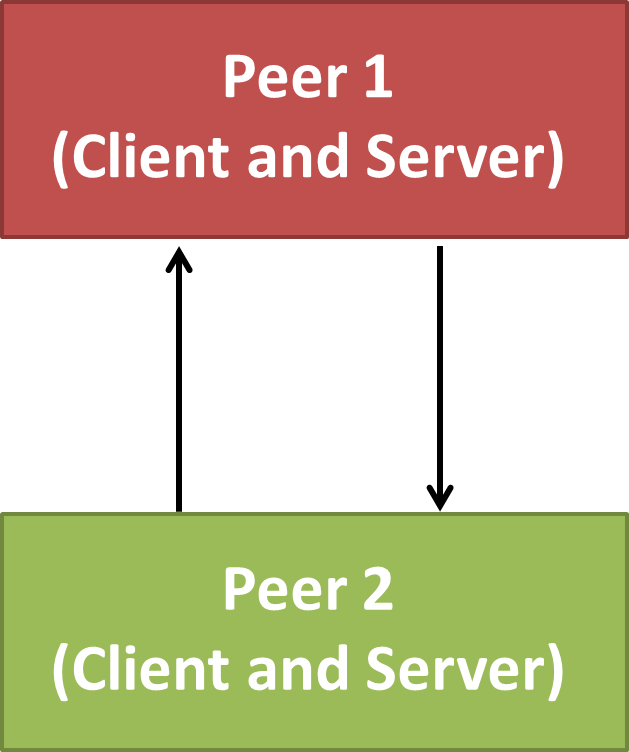
The individual components of the created network are known as peers. These peers may function both as a user, requesting services from other peers, as well as a server, providing services to other peers. Peers are not always equal as some have more resources and can contribute more than they consume. The individual roles of the peer can also change dynamically with time.
There are many historic examples of peer-to-peer architecture in action. Some examples include: Skype, BitTorrent, and Napster. The peer-to-peer architecture pattern can be used to structure a number of different software products, including:
In conclusion, the peer-to-peer software design pattern is best for software products that involve lots of communication and resource sharing between different devices. This pattern is highly scalable allowing the created software product to grow as required.
Key Takeaway: The event-bus pattern is best suited for software products that have components that do not need to be functioning all the time. Trading systems and online forms can all be created using this pattern.
The event-bus pattern is an architecture pattern that works best in software products that have components that act only when there is data to be processed and are inactive during the other times. This pattern has deals primarily with events and has four major components (Figure 8):
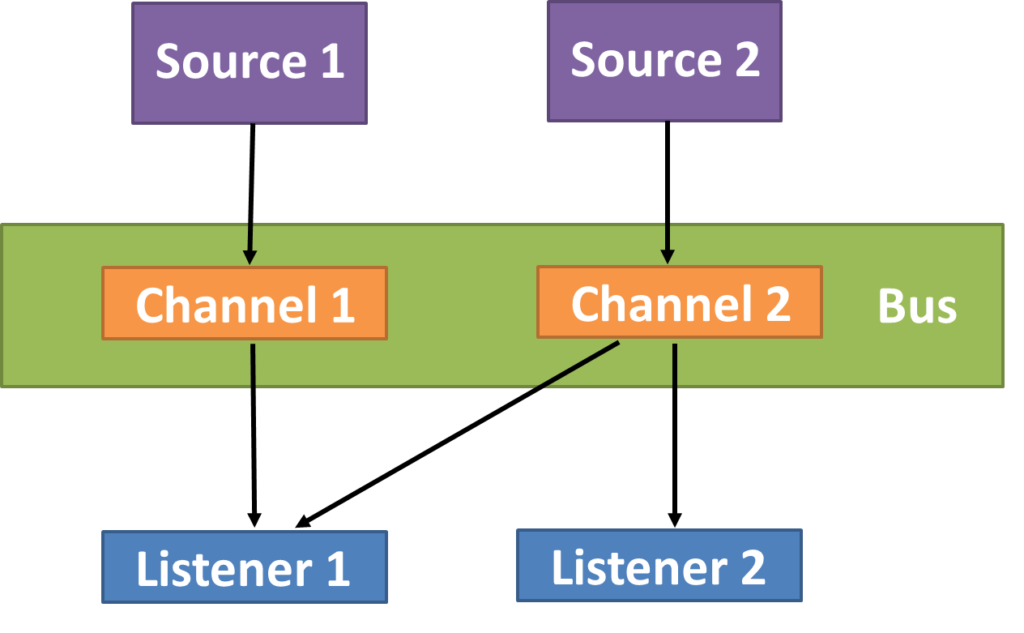
The main purpose of this architecture pattern is to allow for the communication of multiple modules in various ways. This pattern is highly flexible as modules can be added or removed at any time. Additionally, modules can be allowed to communicate directly to each other or broadcast messages to multiple modules at once.
The event-bus architecture pattern is widespread in the development of Android applications and various notification services. Some examples of software products that would use this architecture pattern include:
In conclusion, the event-bus architecture pattern allows for software components to only act when required and remain inactive during all other stages of use. This architecture pattern is highly modifiable through increasing the complexity of the system makes the testing process difficult.
Key Takeaway: The model-view-controller (MVC) pattern can provide multiple views of the same data to its users; however, it does increase the complexity of the software product. This pattern is used to created web applications and desktop graphical interfaces.
The model-view-controller (MVC) architecture pattern involves the separation of a software application’s data model, presentation layer, and control aspects. The key characteristics of the pattern are (Figure 9):
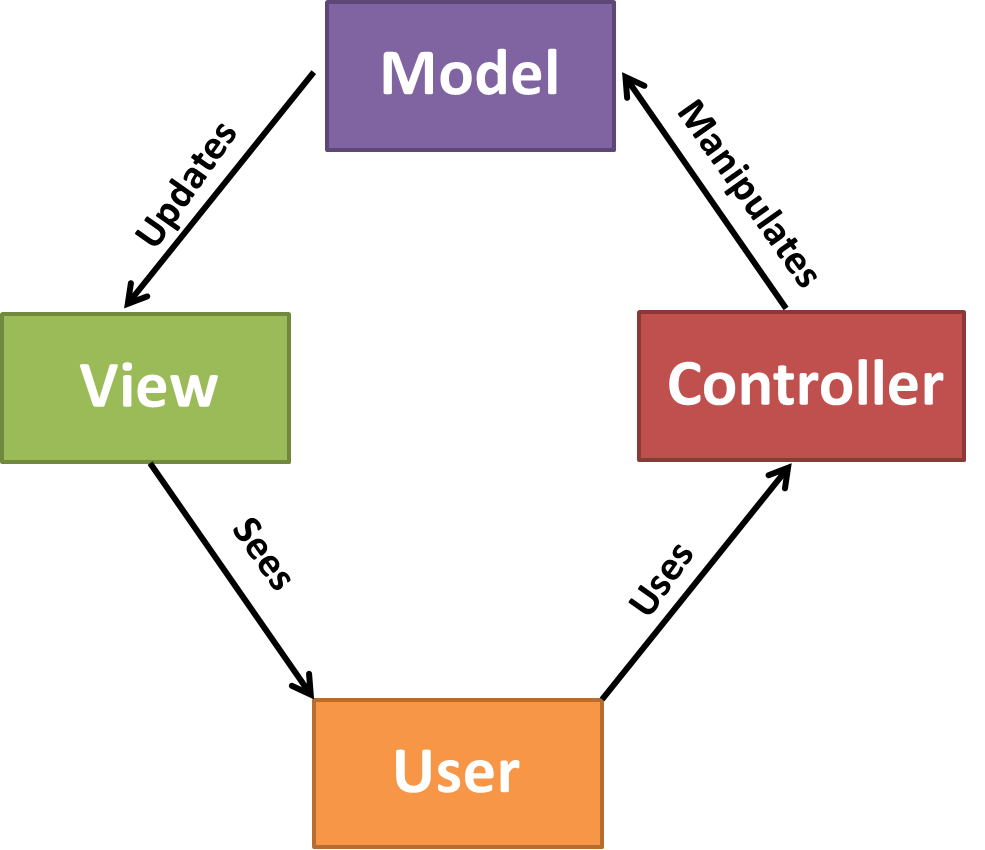
This architecture pattern separates the internal representations of information from how it is presented to, and accepted from. This decouples different software components allowing for efficient code reuse later on.
The MVC architecture pattern has been used to create a number of different World Wide Web (WWW) applications and frameworks including Django and Rails. This architecture is commonly used to create the following software products:
In conclusion, the MVC software design pattern works best when startups are creating applications for the WWW. The separation of the view and the model allows for efficient code reuse though there is a steep learning curve when developers are first starting out.
Key Takeaway: The interpreter pattern focuses on how evaluating lines of programs within a particular programming language. This pattern is best suited for creating database query languages, as well as customizing existing languages.
The interpreter pattern is an architecture pattern that is used for designing a component that interprets programs written in a dedicated language. This pattern mainly focuses on how to evaluate lines of programs, known as sentences or expression, written in a particular language.
This architecture pattern interprets an interface that aids in interpreting a specific programming language. The pattern uses a hierarch of expressions as well as a tree structure to organize all the different expression (Figure 10). External to the patter, a parser goes through and generates a tree structure for evaluating the expressions.
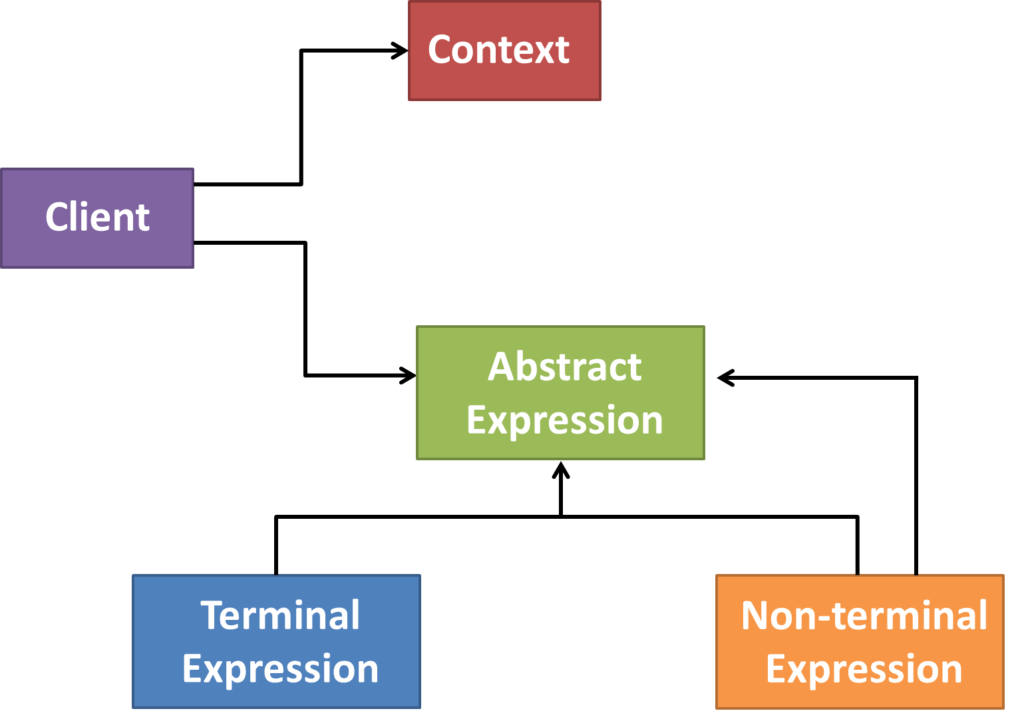
Although the interpreter architecture pattern is not as popular as other patterns, it has been used to create languages that are used to describe communication protocols. The following are some examples of software products that could be made with this architecture pattern:
In conclusion, the interpreter architecture pattern involves the creation of a new programming language or the handling of an existing one through the creation of an interpreter. It is not a highly popular architecture pattern so your startup most likely will not be using it for the creation of your software product.
Choosing the right software design pattern is critical during software development. This is because one the pattern is in place it is very hard, and expensive, to change. As a result, developers should take some time upfront to think about what the right architecture pattern for their particular software product is.
An appropriate architecture pattern can improve the quality of a software product as it is based on a highly tested and reused structure that is suitable for addressing various problems. This blueprint of a software system is extremely helpful as current software products are increasing in size and complexity every day.
In conclusion, startups can utilize existing software architecture patterns to help them develop their software products. Startups should take the time to thoroughly review their business and product requirements to ensure that the selected pattern is appropriate.
Congratulations! You have now learned about the different architecture patterns available to startups during software development. After reading this article you should have learned the following key concepts:
© 2023 Altitude Accelerator | Brampton, Ontario, Canada